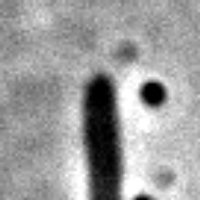A study of the tip detection problem
Autumn 2017
Master Semester Project
Project: 00340

More or less rounded extremities (or "tips") are extremely common features in biological images. They are very important features in many image analysis situations, e.g. when trying to measure the length of bacteria or worms body, or when segmenting legs, whiskers or antennas of model organisms. An extensive amount of methods are available for the detection of other features (such as blobs or corners), but how to solve the tip detection problem remains much less clear. The goal of this project is to study available solutions for detecting tips. This implies identifying, understanding (possibly reimplementing), analyzing, comparing and characterizing the different approaches including e.g. filter design, keypoint detection methods and machine learning. The final goal is to build a catalogue of the different methods for tip detection specifying their advantages, limitations, and how to use them. From this, the interested student could in addition identify recurring problems in existing approaches and propose novel algorithms for tip detections.
- Supervisors
- Virginie Uhlmann, virginie.uhlmann@epfl.ch, 021 693 1136, BM 4.142
- Michael Unser, michael.unser@epfl.ch, 021 693 51 75, BM 4.136